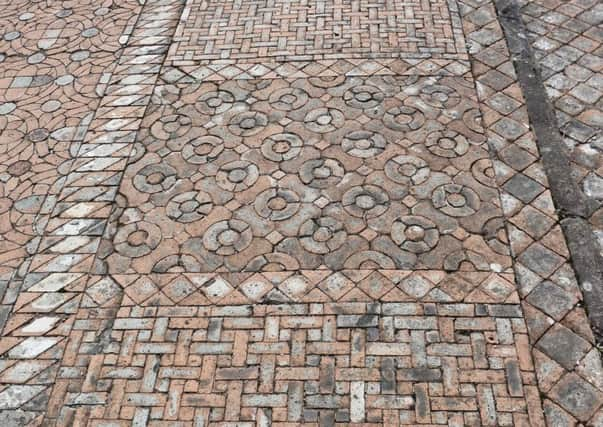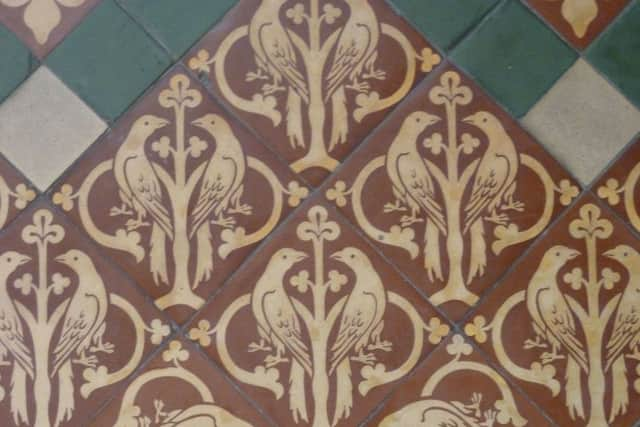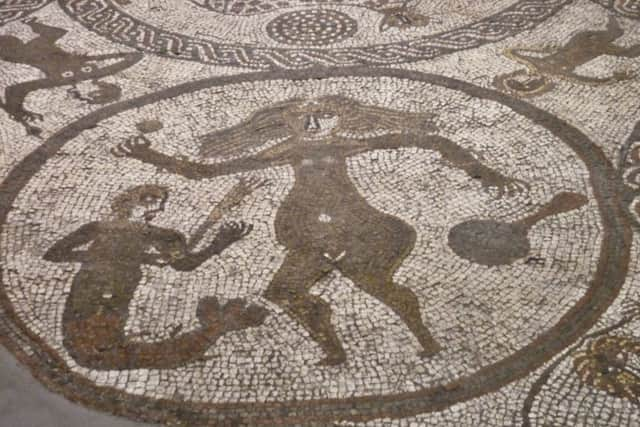The Civic Society column with David Winpenny


Raise your eyes above the shopfronts as you walk the streets of any city, town, village or hamlet, and you’ll find interesting architecture and reminders of the history of the place that haven’t been altered by retail and other fashions.
But sometimes it pays to look down, too. This is especially true in churches and in monastic ruins, because that’s where you are most likely to find evidence of the ways in which floors were treated in the past.
Advertisement
Hide AdAdvertisement
Hide AdHow long ago that past was is very likely down to the zeal of Victorian restorers – especially when it comes to tiled surfaces. While we can still find medieval tiles in our churches, too many of them were removed by the zealots of the 19th century and replaced with brighter, shinier copies.


We can, of course, go further back in this country to find elaborate floors. The Roman villas in Britain often had elaborate mosaic floors, even as far north as Yorkshire; recent excavations of the Bedale bypass found evidence of mosaic pavements, and there are the elaborate examples at the Aldborough Roman site. In the Archaeological Museum in Hull is the Rudston pavement, a provincial but lively depiction of Venus and of a charioteer, among other subjects.
The art of these tessellated pavements (tesserae are the small, glazed square from which they are made) disappeared after the Romans left, but something of the same type was reintroduced by the Cistercian monks when they built their abbeys.
The Cistercians were famous, certainly at their foundation, for their austerity. They rejected what St Bernard, their founder, called ‘grotesque and meaningless ornaments’ and ‘irrelevant and fanciful drollery’.
Advertisement
Hide AdAdvertisement
Hide AdSo out went elaborately-painted screens and altars, along with stained glass windows with figures of saints.


In came plainness; the Five Sisters Window in the north transept of York Minster is the most famous example of their taste, where the glass is predominantly grey and geometric.
Such windows bear a great similarity to the flooring the Cistercians now introduced into their churches.
The technique was to make pieces of various shapes and to fit them together into pavements that were practical and varied.
Advertisement
Hide AdAdvertisement
Hide AdIn Yorkshire we have excellent examples of this Cistercian work remaining at Rievaulx, Jervaulx and Byland abbeys (mostly still in situ) and at Fountains, where in the late 18th century William Aislabie gathered together a selection of such mosaics at the point where the high altar of the abbey once stood. We may regret their moving, but seen together they do offer a good overview of such paving.
It was, in reality, a complex way of producing something to be walked on – the Cistercian equivalent of a hand-knotted Persian carpet. Unlike Roman mosaics, in which the tesserae were uniformly square and usually of the same size, Cistercian mosaics are made of a wide variety of different shapes – squares, circles, quadrants, rectangles, diamonds, and sometimes even more elaborate shapes.
These may have been made in moulds, but it seems that the general practice was to roll out the clay and to cut the shapes by hand, either round a template or with a specially-prepared cutter.
If the shapes had straight edges they might be made several at a time by cutting part way through before firing and then separating them afterwards, like chunks of chocolate from a bar. Either way, it must have been a hit-and-miss process; the glazes on the surfaces (which have mostly vanished) were not easy to control, and nor was the firing in kilns. There must have been many rejects that had become mis-shapen.
Advertisement
Hide AdAdvertisement
Hide AdThis method of making floors lasted from the early 12th to the late 13th centuries – such tiles were still being made in a kiln at Meaux Abbey near Beverley in the 1260s – but by that time there was a new type of tile.
These in some ways were simpler, because they were square, but in other ways more elaborate, as they required decoration by clay of a different colour.
These are the so-called ’encaustic tiles’; encaustic just means ‘burned in’ and was a word applied by the Victorians to the medieval tiles that they particularly admired (even if they didn’t take care of the originals).
Encaustic tiles were usually brown with yellow inlay, though imprecise firing and different types of clay could produce any base from chocolate to light red, and decoration from lemon to old gold.
Advertisement
Hide AdAdvertisement
Hide AdSometimes other colours were introduced, particularly green; blue was very rare. Fine Victorian tiles at Ely Cathedral, copying medieval originals © David Winpenny (single use only) The tiles were made by, first, producing the plain square tile and letting it dry slightly – so that, as they said, it was like leather. A design was then stamped on to the tile. The stamper was pressed quite deep, as the tile would shrink in firing.
The channel produced by the stamp was then filled with ‘slip’ or liquid clay in the contrasting colour before the whole was fired; again, there must have been plenty of rejects. The finished tiles from a particular stamp would, of course, all have the same pattern, but when fired there was sufficient variety both of colour and of texture to make a pavement that was diverse and interesting rather than mechanical and dull – something that the Victorians who replaced they originals with their own machine-made versions failed to appreciate, however beautiful their copies.
The medieval tiles have a wide variety of subjects – from simple circles and interlaces to fleurs-de-lys and stars, animals, birds, figures, heraldry and sacred monograms.
All these were copied by the Victorians, who also added their own variations; they particularly liked to add blue. Some Victorian floors, like that at Lichfield Cathedral, offer almost a text-book for anyone studying the influence of medieval tiles on the Victorians.
So remember to see what’s under your feet as well as above your eyeline when your visiting churches and cathedrals – whether you spot medieval or Victorian tiling, it is usually worth a good look.